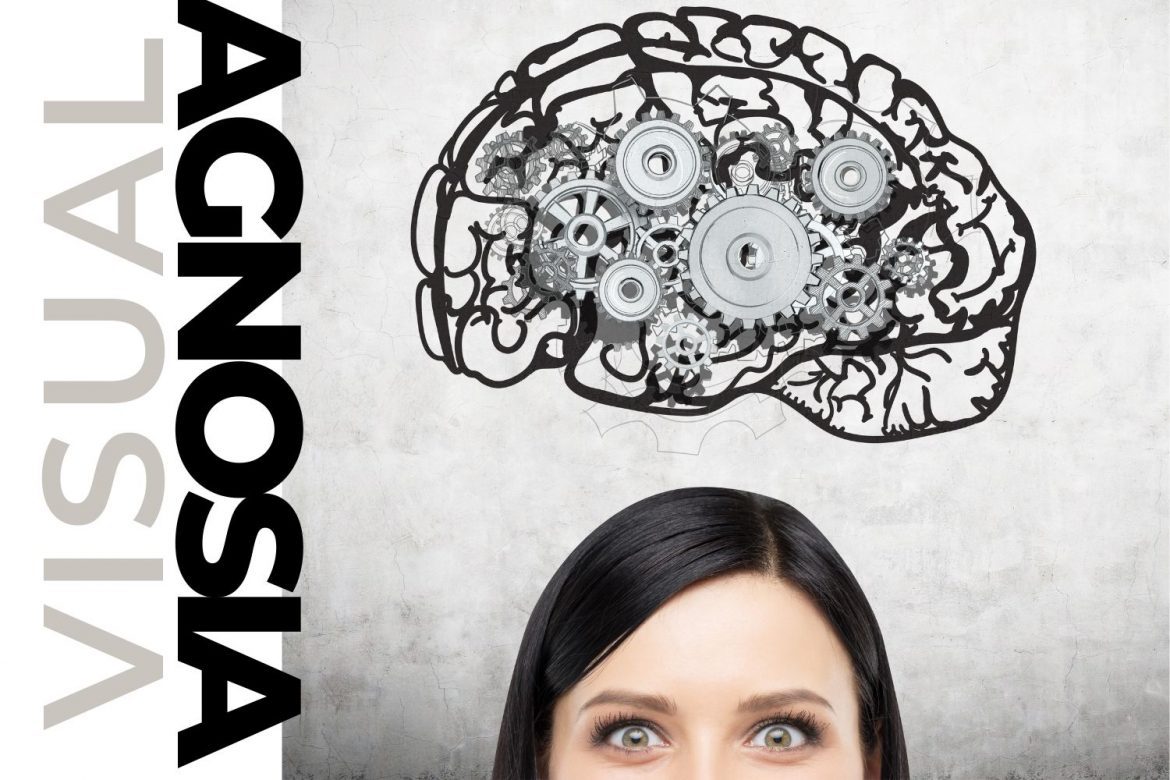![]()
Agnosia is a rare condition that affects the senses. Imagine smelling a rose and not being able to place the smell. Imagine eating mom’s chocolate chip cookies, but finding out you don’t recognize the taste.
While it’s likely you know someone who temporarily lost his or her sense of smell or taste as a result of Covid, it seems almost impossible for someone to no longer be able to look at a common object, word, or even face, and be unable to tell what or who it is. However, that’s exactly what happens when someone is afflicted by a rare condition known as visual agnosia.
Defining visual agnosia
According to the United Brain Association, agnosia is a communication disorder that disrupts and impairs the brain’s ability to process sensory cues, most commonly visual and auditory cues.
Visual agnosia specifically disrupts your brain’s ability to process and understand what you are seeing with your eyes. In other words, your eyes are working correctly and as they normally would, but your brain is not.
As the medical community learns more about visual agnosia, they have come to understand there are actually several different types of the condition, including types that specifically affect your ability to recognize common objects (akinetopsia), words (alexia), colors (achromatopsia), and even familiar faces (prosopagnosia).
The difference between visual agnosia and amnesia
Agnosia is a confusing condition often mistaken for amnesia. While the two conditions share similarities, and visual agnosia is sometimes even referred to as visual amnesia, it’s important to understand they are very different medical conditions. Amnesia is the inability to remember facts, information, events, or people. Agnosia is the inability to identify them.
For example, in the case of alexia, the form of visual agnosia that affects the ability to recognize words, you can write and speak without issue but are often unable to make sense of or understand the words you are reading.
Another example is achromatopsia, or the inability to identify colors. Amnesia would cause the inability to remember specific colors (and color blindness would cause the inability to see specific colors). Those afflicted with achromatopsia can see colors and tell them apart but are unable to identify specific colors.
Most common symptoms of visual agnosia
While visual agnosia can occur at any age as a result of a traumatic brain injury, the condition is most often observed in older adults. In addition to the symptoms associated with specific types of visual agnosia mentioned above, other frequently observed symptoms associated with the condition include:
- An inability to draw or describe common objects
- An inability to see a complete object, focusing instead on individual parts (ex: not seeing or recognizing a complete airplane, rather seeing the wings, engines, and wheels separately), also known as form agnosia
- Simultanagnosia, or only being able to see one object at a time (ex: only seeing one tree at a time and not being able to recognize being in a forest)
- An inability to see and recognize non-verbal cues and body language.
What causes visual agnosia?
Although the exact cause of visual agnosia is not fully understood, visual agnosia is most closely associated with damage or disease that affects the portions of the brain and nervous system responsible for vision and processing of visual cues.
Any type of damage to your brain can result in injuries known as lesions. Where these lesions occur in the brain will determine what areas are affected. According to the Cleveland Clinic, lesions on the temporal or parietal lobes of the brain (the areas most closely associated with vision) are most often caused by tumors, traumatic brain injury, stroke, seizures, and environmental toxins.
Various forms of agnosia, including visual agnosia, can also be caused by degenerative brain diseases such as Alzheimer’s disease, Parkinson’s disease, and other forms of dementia.
How visual agnosia is diagnosed
Doctors will use a wide variety of tests and assessments in order to diagnose visual agnosia and to rule out other potential diseases or illnesses related to the symptoms. In addition to a complete health history, doctors will also likely use a number of physical and neurological assessments in combination with a variety of diagnostic and imaging tests when diagnosing visual agnosia, including:
- Sensory assessments and eye-tracking examinations
- Cognitive assessments and tests of memory and recognition, including the Boston naming test, Warrington recognition memory test, and Benton face recognition test
- CT scan
- Electroencephalogram
- MRI
Treatment and therapy for visual agnosia
Most cases of visual agnosia, when not occurring as a result of injury, are progressive and develop slowly over time. Unfortunately, the medical community has not yet identified a cure that corrects and/or prevents visual agnosia. At this time, most treatments and therapies prescribed and recommended by medical providers are done with the intention of treating symptoms of underlying conditions and as a way to slow the progression of the condition.
Your medical provider might recommend a combination of the following:
- Specific medications to treat underlying conditions
- Surgery (in the case of tumors or lesions in the brain contributing to the condition)
- Occupation therapy
What to do if visual agnosia is suspected
Because of the complexity of the condition and the potential for so many other conditions to contribute to the symptoms associated with visual agnosia, it’s critically important not to self-diagnose or self-treat this condition. Instead, upon noticing any of the symptoms associated with the condition, notify your healthcare provider right away.
In addition to notifying your healthcare provider, and because this condition involves your eyes and vision, it’s also important to schedule an appointment with your optical specialist to rule out any other potential vision condition.


